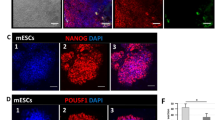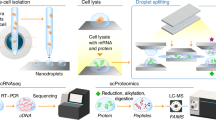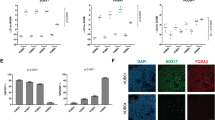Abstract
Nanog, a homeodomain (HD) transcription factor, plays a critical role in the maintenance of embryonic stem (ES) cell self-renewal. Here, we report the identification of an alternatively-spliced variant of nanog. This variant lacked a stretch of amino acids (residues 168-183) located between the HD and tryptophan-repeat (WR) of the previously-reported full length sequence, suggesting that the deleted sequence functions as a linker and possibly affects the flexibility of the C-terminal transactivation domain relative to the DNA binding domain. Expression of mRNA encoding the splice variant, designated as nanog-δ 48, was much lower than that of the full length version in human ES cells. The ratio of nanog-δ 48 transcript to full length transcript increased, however, in multipotent adult progenitor cells. EMSA analysis revealed that both forms of Nanog were able to bind a nanog binding sequence with roughly the same affinity. A reporter plasmid assay also showed that both variants of nanog modestly repressed transactivation of gata-4, whose expression is proposed to be inhibited by nanog, with comparable potency. We conclude that, despite the difference in primary structure and expression pattern in various stem cells, the alternatively-spliced variant of Nanog has similar activity to that of the full length version.
Similar content being viewed by others
Article PDF
Author information
Authors and Affiliations
Rights and permissions
This is an Open Access article distributed under the terms of the Creative Commons Attribution Non-Commercial License (http://creativecommons.org/licenses/by-nc/3.0/) which permits unrestricted non-commercial use, distribution, and reproduction in any medium, provided the original work is properly cited.
About this article
Cite this article
Kim, J., Kim, J., Kim, B. et al. Identification and functional characterization of an alternative splice variant within the fourth exon of human nanog. Exp Mol Med 37, 601–607 (2005). https://doi.org/10.1038/emm.2005.73
Published:
Issue date:
DOI: https://doi.org/10.1038/emm.2005.73
Keywords
This article is cited by
-
Reprogramming activity of NANOGP8, a NANOG family member widely expressed in cancer
Oncogene (2014)
-
The phosphoinositide-3-kinase/Akt pathway mediates the transient increase in Nanog expression during differentiation of F9 cells
Archives of Pharmacal Research (2010)
-
Nanog retrotransposed genes with functionally conserved open reading frames
Mammalian Genome (2006)



